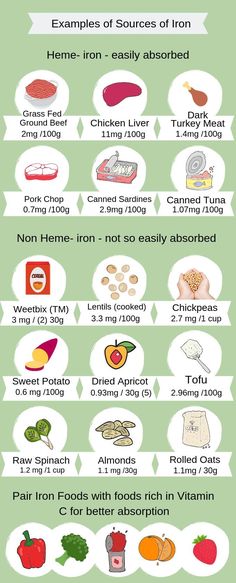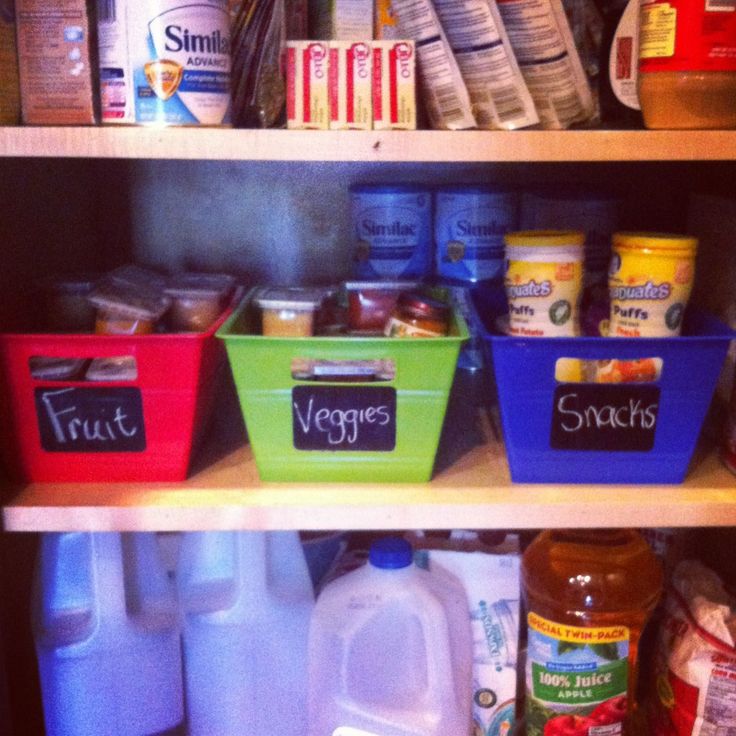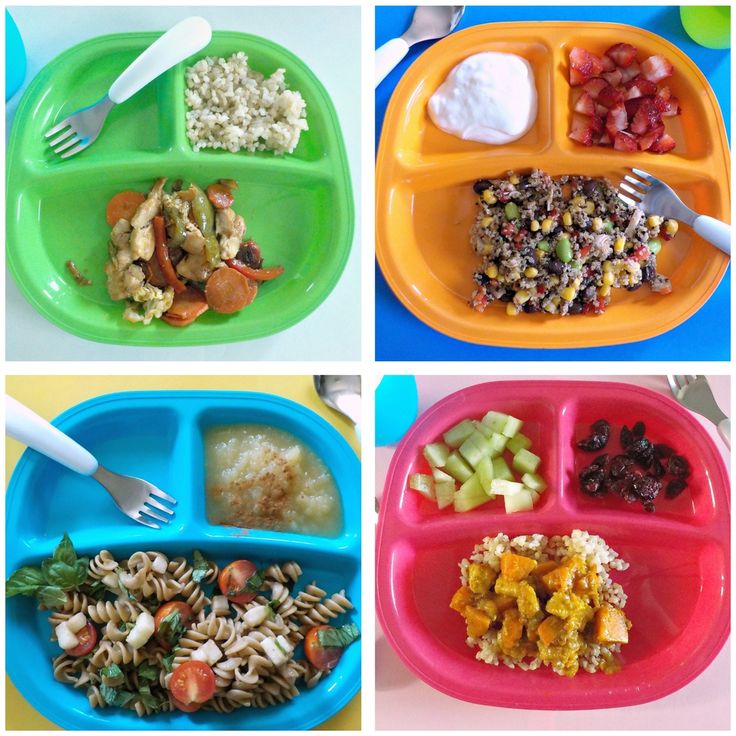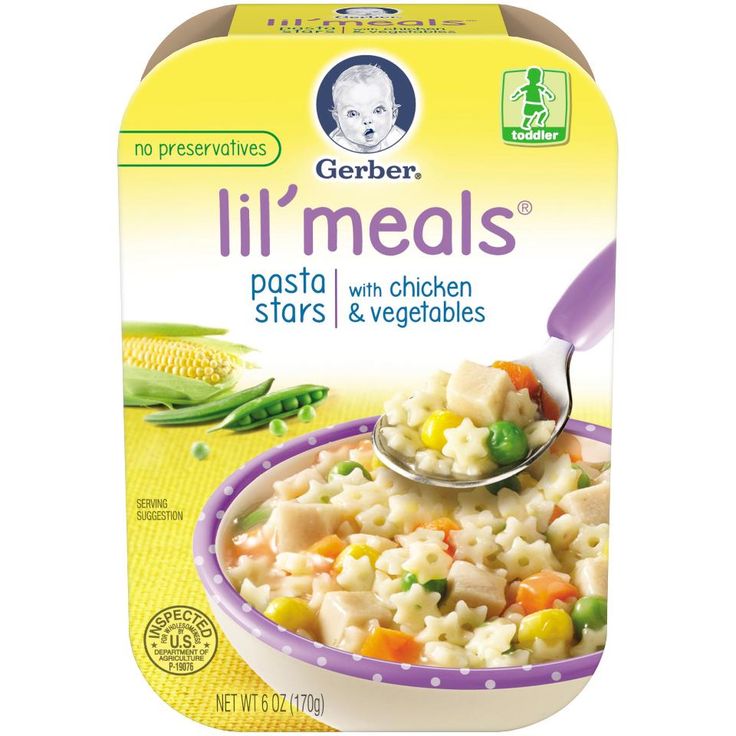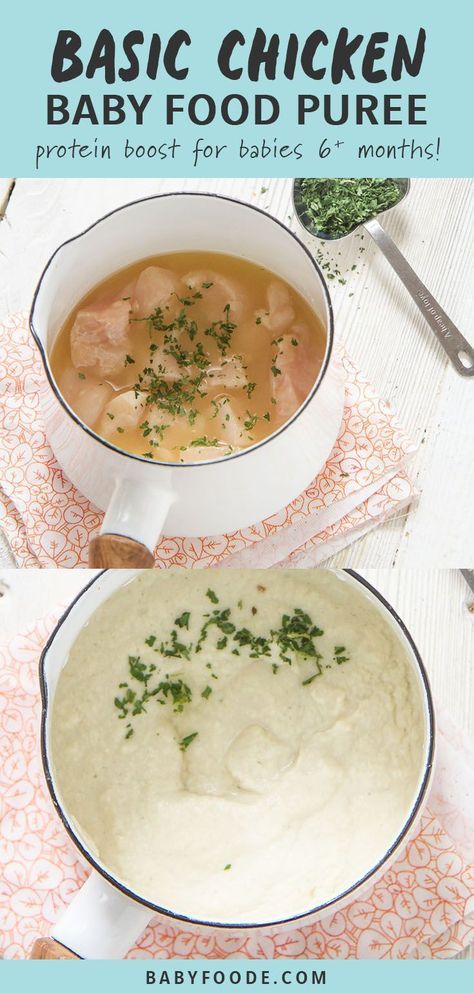Best food sources of iron for babies
Best Iron-Rich Foods for Babies, Toddlers, & Kids (+50 Recipes!)
Ensuring that our kids eat a well balanced diet, including iron-rich foods, can be hard when they’re eating unpredictably. I hope this info on iron-rich foods for kids (and the recipe ideas at the bottom) helps to set your mind at ease!
Iron-Rich Foods
Ensuring that your kids are getting enough iron can seem hard when they’re in a phase of picky eating—or just not eating a ton. But since iron deficiency and iron deficiency anemia are still common issues with kids and it can impact their development and behavior, it’s important to try to include iron-rich foods in their daily meals.
For some context, according to the American Academy of Pediatrics, “Among children ages 1 to 3 years, iron deficiency occurs in 6.6 percent to 15.2 percent of toddlers, depending on ethnicity and socioeconomic status.” Which is much higher than I would have expected. They say that preterm infants, exclusively breastfed infants, and infants at risk of developmental disabilities are at higher risk for deficiencies.
I never want any parents to worry excessively about their child’s nutritional intake and thankfully, adding iron to a diet is actually quite easy.
(My favorite iron-rich recipes include Spinach Muffins, Extra-Veggie Baby Pasta, Oatmeal Bars, Meatballs, Chicken Puree, Butter Chicken, Chicken Tacos and Spinach Eggs. For more, scroll down.)
How much iron does my child need?
Toddlers ages 1 to 3 years need 7 mg/day of iron. Kids aged 4-8 need 10 mg/day. For context:
- ¾ cup of Cheerios: 6 mg
- 1 serving fortified infant oatmeal: 5 mg
- 4 ounce hamburger: 5 mg
- 2 ounces Banza chickpea pasta: 4 mg
- ½ cup dried peaches: 3.2 mg
- 2 ounces Barilla red lentil pasta: 3 mg
- ½ cup of lentils: 3 mg
- 1 cup prune juice: 3 mg
- Spinach Quesadilla: 2.1 mg
- ½ cup dried apricots: 1.7 mg
- ½ cup oatmeal: 1.7 mg
- Simple Green Smoothie: 1.7 mg
- Spinach Banana Muffin: 1.4 mg
- 1 egg: 1.4 mg iron
- ½ cup raisins: 1.
 5 mg
5 mg - 1 slice whole wheat bread: 0.7 mg
- ½ cup fortified baby puffs: 0.7 mg
- 1 ounce hummus: 0.7 mg
- 2 tbsp peanut butter: 0.6 mg
- ½ cup edamame beans: 0.5 mg
- 1 cup watermelon: 0.4 mg
TIP: It’s possible that your kiddo is already getting enough just by eating normal toddler-size servings.
Does my child need an iron supplement?
This question will vary a lot by child so it’s best to check in with your doctor. Kids are routinely screened for iron deficiency when they’re babies and toddlers, so definitely discuss this with your pediatrician if you don’t remember what those results were, if your child is older, or if you’re just curious about supplementing.
It can be hard to find a multivitamin with iron, so check your label, or consider a separate iron supplement in consultation with your doctor.
What are the best sources of iron for kids?
The AAP recommends that iron comes from iron-rich foods first and foremost. The type of iron in meat, fish, and poultry is easier for our bodies to absorb, but adding a range of iron-rich foods is your best bet. Here are some examples of foods with a good dose of iron.
The type of iron in meat, fish, and poultry is easier for our bodies to absorb, but adding a range of iron-rich foods is your best bet. Here are some examples of foods with a good dose of iron.
- Red meats like beef and lamb
- Dark meat poultry
- Fish including shrimp and oysters
- Iron-rich vegetables including dark leafy greens (think Popeye!), baked potatoes, and pumpkin
- Beans and legumes like kidney beans, lentils, and tofu
- Fortified cereals like Cheerios and some hot cereals including baby oatmeal
- Whole grains and whole grain products (including some of the newer bean pastas like Banza)
TIP: A toddler-size serving of meat is 2 tablespoons to ¼ cup. A toddler-size serving of produce is 2 tbsp to ¼ cup. A serving of beans and legumes is 1-2 tablespoons for younger kids and ¼ cup for older kids. (Find more specifics in my Daily Toddler Nutrition Guide.)
Top 10 Best Iron-Rich Foods for Babies
Here are my go-to foods with a lot of iron that you can feed to a baby who’s eating purees or baby led weaning style foods.
- Beef, ground
- Bean puree
- Beans, very soft and lightly mashed
- Bean pasta, cooked very soft (like Banza)
- Chicken, finely shredded or ground or Chicken Puree
- Eggs, scrambled or Egg Yolk Puree
- Green bean puree
- Infant cereal like baby oatmeal, fortified
- Oatmeal
- O cereal
- Smoothies with spinach or kale (serve on a spoon or in a reusable pouch)
- Sweet potatoes, mashed
- Pea puree
- Peanut butter puree
- Strawberry puree
TIP: Iron stores in babies start to run out starting around 6 months, so you’ll want to incorporate these foods into your baby’s diet from an early age.
Top 15 Best Iron-Rich Foods for Toddlers and Big Kids
These foods are easy to prepare and packed with iron for kids.
- Apricots, dried
- Beans
- Bean pasta (like Banza with marinara sauce)
- Beef burgers
- Broccoli
- Eggs
- Green beans
- Oatmeal
- Peanut butter
- Raisins
- Smoothies with spinach or kale
- Spinach Pesto
- Strawberries
- Watermelon
- Wheat bread
TIP: Aim to serve 2-3 of these foods (from either the baby or toddler list) most days and you should easily provide enough opportunities for your child to eat enough iron.
Add Vitamin C for Increased Iron Absorption
If you pair iron-rich foods with produce with plenty of Vitamin C—think citrus, strawberries, kiwi, tomatoes, dark greens, and bell peppers—the iron will be more readily absorbed by the body. Some ideas to consider:
- Pasta with Meatballs (Vitamin C from tomatoes, iron from beef)
- Bean Burritos with salsa (iron in beans, Vitamin C from salsa)
- Bean Quesadillas with chopped tomatoes on the side (iron in beans and whole grain tortilla, Vitamin C from tomatoes)
- Simple Green Smoothie (iron from greens, Vitamin C from fruit)
- Spinach Banana Muffins with Banana with kiwi (iron in spinach, Vitamin C from kiwi)
Limit Milk to No More than 24 Ounces Each Day to Avoid Limiting Iron Absorption
Experts at the Mayo Clinic also advise against letting the kids have more than 24 ounces of milk in a day (or three 8 ounce servings) which could negatively impact iron absorption. That much milk could also make them less hungry for other foods, which could also limit how much iron they’re able to eat through foods.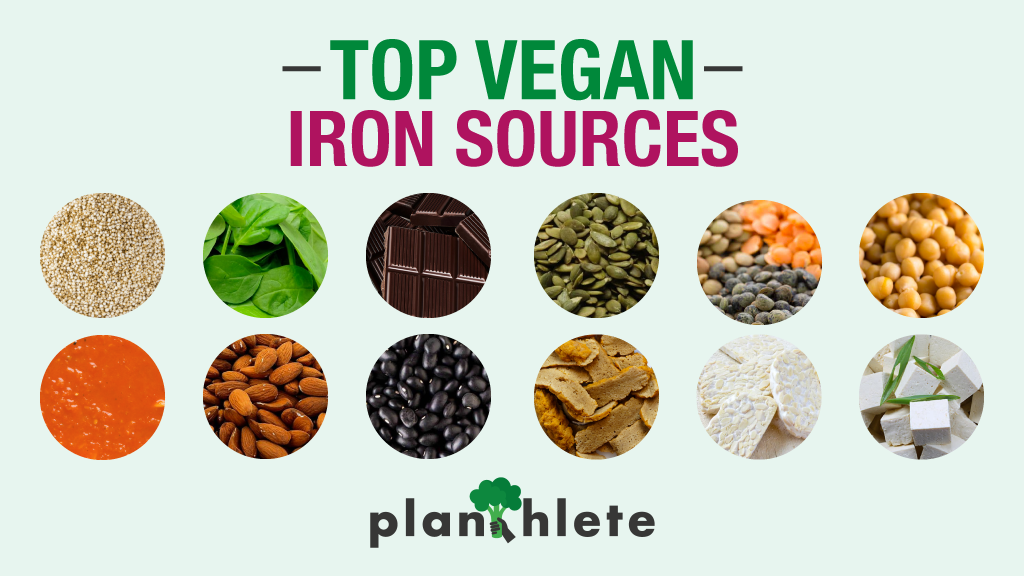
50 Best Iron-Rich Recipes for Babies, Toddlers, and Kids
Here are some of my favorite recipes for kids of all ages that are rich in iron. (The list is organized alphabetically for easy reference, not in order of preference!)
- Bean Puree
- Bean Pasta with Marinara Sauce
- Beef Burritos with Veggies
- Black Bean Quesadillas
- Black Bean Soup with Citrus
- Broccoli Pesto
- Broccoli Cheddar Soup
- BBQ Shredded Chicken
- Cheesy Meat Buns
- Chicken Meatballs with Sweet Potato
- Chocolate Smoothie with Hidden Veggies
- Green Smoothie
- Kale Bites
- Lentils and Rice with Dried Fruit
- Lentils with Tomatoes and Italian Spices
- Lentil Soup with Veggies
- Lentil Falafel
- Meatballs with Hidden Veggies
- Mini Egg Muffins
- Mexican Egg Muffins with Spinach
- Moroccan Lamb Meatballs
- No-Bake Energy Bites
- Nut-Free Hummus
- Oatmeal with Apple and Raisins
- Oatmeal Bars
- Oatmeal with Pumpkin
- Pesto Chicken and Brown Rice
- Potato Nachos
- Pumpkin Oatmeal Bars
- Pumpkin Oatmeal Muffins
- Slow Cooker Chicken and Bean Tacos
- Slow Cooker Black Bean Soup
- Slow Cooker Chicken Tacos
- Spinach Banana Muffins with Banana
- Spinach Pancakes
- Spinach Eggs
- Spinach Pesto
- Spinach Quesadillas
- Strawberry Puree
- Strawberry Smoothie
- Strawberry Muffins
- Sweet Potato Quesadillas
- Sweet Potato Baby Food
- Tofu Nuggets
- Tofu, Baked
- Tofu with Sesame
- Whole Wheat Bread
- Veggie Chili
- Veggie Chili Mac
- Zucchini Burgers
Printable Iron-Rich Foods List
For easy reference, you can print this list of iron-rich foods for kids keep in your kitchen, or save the image on your phone. Simply sign up for my newsletter and gain access to my entire FREE Resource Library of printables.
Simply sign up for my newsletter and gain access to my entire FREE Resource Library of printables.
Related Recipes
I’d love to hear if iron has been an issue for you with your kids. Chime in below in the comments!
50 Iron-Rich Foods for Babies, Toddlers & Kids
If it’s time to start introducing solid foods to your growing baby, you may start hearing about iron. You might be wondering: What is iron, why should I care about it, and how can I make sure my baby or toddler gets enough? Let’s take a look.
What Are Iron-Rich Foods?
Iron comes from both plant and animal sources. Some foods that are high in iron include:
- Meat, poultry and seafood
- Legumes (beans, peas, lentils)
- Dark leafy greens
- Nuts and seed
- Dried fruits (dates, raisins, apricots)
- Enriched cereals and grain products
Related: Not sure what to feed your baby? Discover the best first foods for babies.
What Is Iron?
- Iron is a mineral that plays an essential role in human health.

- It helps our red blood cells do their primary job: transport oxygen to cells throughout the body.
- Infants’ bodies and brains depend on it for growth and development.
Why Do Babies Need Iron?
During the last few months of pregnancy, newborns build up a store of iron from the nutrients they get in utero (thanks, Mom!). This store of iron lasts for their first 4-6 months of life. (1)
When that supply of iron is diminishing, it becomes important that babies start getting iron from their own diet. By the time those iron stores from birth are running low, many babies are ready to start eating solid foods, so it’s a great idea to make sure those first bites include the iron that older babies need.
Babies who are born early or have other risks of iron deficiency might have had less of a chance to build up their iron supply during pregnancy, and may need iron earlier on in life. If this is a concern, your pediatrician can help determine if and when iron supplements are necessary.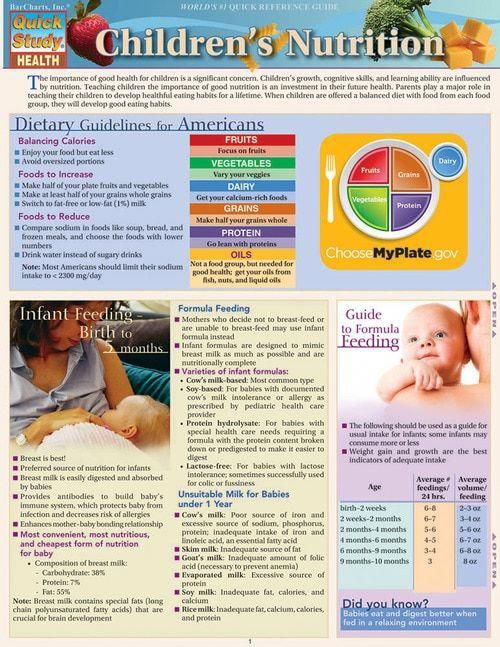
Related: What you should know about toxic heavy metals in baby food.
Iron-Rich Food Ideas for Babies
Serving iron foods to your baby doesn’t have to be a challenge. Here’s a list of snacks and meals that are high in iron and appropriate for babies who are starting solids.
- Ground beef, chicken or turkey crumbles or meatballs/patties
- Canned tuna, salmon or pureed sardines mixed with yogurt or mashed avocado
- Commercially prepared baby food beef, lamb, pork or turkey
- Sweet potato (pureed, mashed or cut into spears)
- Mashed or soft cooked beans
- Pureed, mashed or whole green peas
- Edamame paste spread thin on toast
- Enriched pasta with marinara sauce
- Soft cooked lentils mixed with mashed potato
- Applesauce mixed with crushed pumpkin seeds or pumpkin seed butter
- Oatmeal mixed with crushed nuts or smooth nut butter
- French toast sticks
- Chia seed pudding
- Applesauce or oatmeal with ground sesame seeds
- Soft mango slices rolled in an iron-rich topping like crushed cereal or infant cereal
- Avocado spears rolled in ground pumpkin, sesame or hemp seeds
- Oatmeal with pureed pumpkin or sweet potato
Related: Teach your baby to use their pincer grasp with these pincer grasp activities.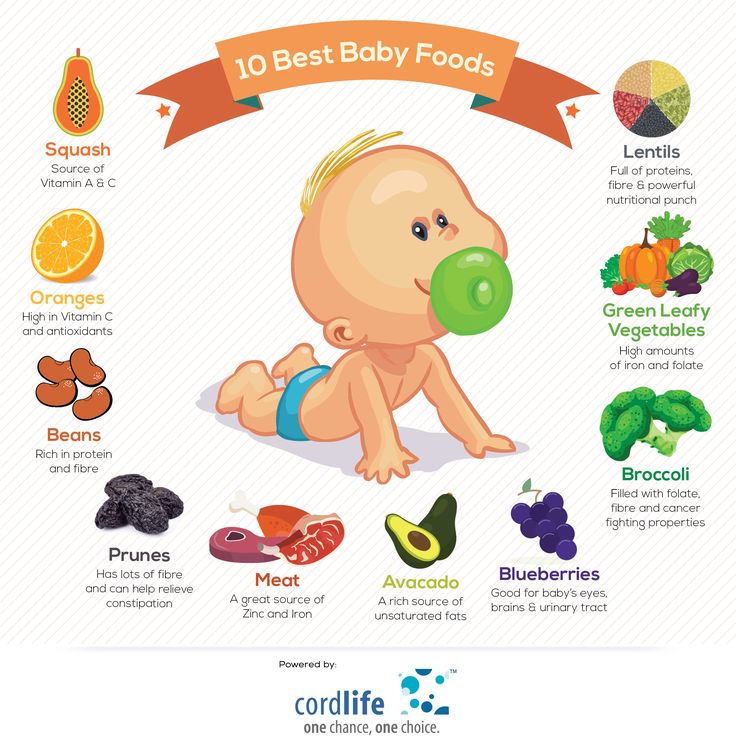
Iron-Rich Food Ideas for Toddlers
Congratulations, your baby is now a toddler! From age 1-3, iron remains an essential part of the diet, but the amount they need drops down to about 7 mg per day. Your growing toddler will be ready and able to handle the more advanced textures and tastes of what’s on your plate, but you should stay mindful of choking hazards. Here’s a list of iron foods for toddlers.
- Tuna salad on crackers or toast
- Hummus dip with pita bread, cucumber and bell pepper spears
- Chili with beans
- Quesadilla with refried beans with salsa dip
- Nut butter and jelly (or sliced berries, pears or banana) sandwich
- Sesame noodles
- Pumpkin pancakes or muffins with strawberries
- Oatmeal with raisins and hulled hemp seeds
- Picadillo
- Spaghetti with meatballs or meat sauce
- Pasta with pesto sauce
- Lentil soup
- Burritos made with lentil or ground beef filling
- Whole grain dry cereal with orange slices
- Peanut butter, banana and strawberry smoothie
- Smoothies with leafy greens, berries and hemp seeds
Related: Learn even more about what to feed two-year-olds.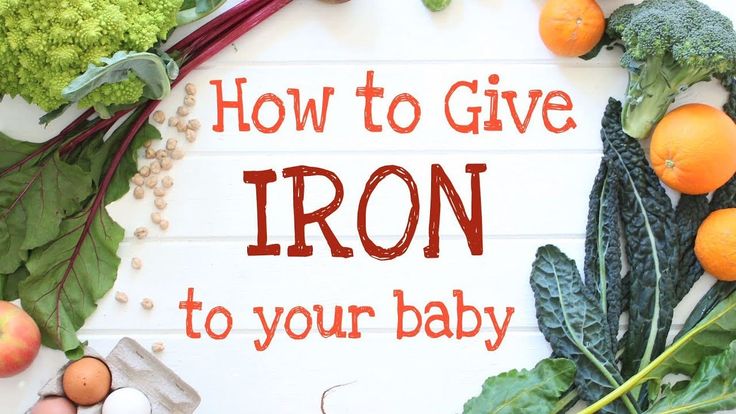
Iron-Rich Foods for Older Kids
Got older kids? Here are more ideas for how to serve foods high in iron to kids.
- Nut butter on toast with sliced banana and chia seeds
- Iron fortified breakfast cereal with fruit
- Breakfast smoothie with nut butter, fruit and yogurt
- Yogurt parfait with berries, pepitas and granola
- Spaghetti and meat sauce
- Minestrone soup
- Lentil soup or chili
- Nut butter and banana roll-ups or sandwiches
- Shrimp and veggie stir-fried noodles
- Peanut mango chicken wraps
- Burrito bowls with meat and/or beans, salsa or diced tomato, olives and cheese
- Veggie sticks with hummus
- Pumpkin seeds
- Roasted chickpeas
- Trail mix with Cheerios, nuts and raisins
- Orange chocolate date balls
- Sesame snaps
How Much Iron Do Babies and Toddlers Need?
From 6 to 12 months old, babies need about 11 mg of iron per day in their diets. That’s a lot of iron! It’s more than young kids need. It’s almost as much as a teenager needs, and teenagers have a lot more room in their tummies to work with!
That’s a lot of iron! It’s more than young kids need. It’s almost as much as a teenager needs, and teenagers have a lot more room in their tummies to work with!
From age 1-3, iron remains an essential part of the diet, but the amount of iron a toddler needs drops down to about 7 mg per day. (2)
To give you an idea (3):
- ½ cup of canned black beans contains 2.3 mg iron
- 1 ounce canned salmon contains .33 mg iron
- ½ cup of cooked Swiss chard contains 2 mg iron
- 1 ounce of cooked ground beef contains .83 mg iron
- ¼ cup fortified infant oat cereal contains 6.8 mg iron
- ½ cup cooked, mashed sweet potato contains 1.2 mg iron
- ½ cup of Cheerios cereal contains 1.8 mg iron
Don’t worry, that doesn’t mean that your sweet, little 6-month-old needs to start eating steak every day. But it should help you see that you have to make the most of the small amounts of food your baby eats each day as they start solid foods.
Remember, it’s not important that babies get all of their iron in one sitting, or even that they get exactly 11 mg each and every day. Start small, and offer iron-rich foods at each meal and snack time. By the time your baby gets accustomed to solid foods, they’ll be well on their way to meeting their iron needs.
Start small, and offer iron-rich foods at each meal and snack time. By the time your baby gets accustomed to solid foods, they’ll be well on their way to meeting their iron needs.
Related: Is your child a picky eater? Read our expert tips for managing picky eating.
If my older baby or toddler is still nursing or drinking formula for most of their diet, don’t they get everything they need from that?
That depends. All babies need iron. While breast milk continues to provide most of the nutrients your baby needs to grow and thrive, it is not a good source of iron. Also, iron from a nursing mom’s diet does not transfer into her milk. So, breastfed babies will need their first solid foods to be rich in iron to meet their needs.
Most commercial infant formulas are fortified with iron, so babies who use formula for the majority of their diet will depend less on solid foods to meet their iron needs.
Related: Need help feeding your 1-year-old? Read more about what 1-year-olds eat.
Do I need to give my baby vitamin drops?
There are many factors that can increase a baby’s risk of iron deficiency. For these babies, iron supplementation might be a good idea. Talk to your pediatrician if you’re concerned about your child’s iron needs. Iron deficiency is common in infants and children. A quick and easy blood test can screen for iron deficiency at your baby’s next well visit.
Do I need to worry about my child getting too much iron?
Generally speaking, you don’t need to worry about your baby or toddler getting too much iron from foods. Babies who are exclusively breast or formula fed using an iron-fortified infant formula, and begin eating solid foods like vegetables, fruits, meats and beans around 6 months of age do not need to worry about getting too much iron.
Babies who are mostly formula fed with an iron-fortified formula should not take an additional iron supplement (or multivitamin containing iron) unless directed by their doctor. If you use a multivitamin with iron, be sure to keep it out of reach from all children in the house, as these supplements are not treats but are often designed and flavored to be very appealing to kids. Getting too much iron from supplements can be harmful.
If you use a multivitamin with iron, be sure to keep it out of reach from all children in the house, as these supplements are not treats but are often designed and flavored to be very appealing to kids. Getting too much iron from supplements can be harmful.
Related: Learn what’s normal and what’s not when your toddler isn’t eating much.
Iron hacks for busy parents
Sometimes it can seem overwhelming to meet your baby’s iron needs in the small bites that actually make it into their stomachs! A couple of tips to make it a little easier (4,5,6):
- Some types of iron are easier for the body to absorb. Iron from animal products like meat, poultry and fish (called heme iron) is more readily absorbed than iron from plant sources, iron supplements and iron-fortified foods (called non-heme iron).
- You can increase absorption of non-heme iron foods by pairing them with foods that are high in vitamin C, like broccoli, tomatoes and strawberries. This is a great tip for babies, kids and adults alike!
- Iron-fortified cereals and other grains are an easy way to boost iron intake throughout the day.

- Think outside the bowl! Iron-fortified cereals can be used as ingredients in baked goods, casseroles, or other mixed dishes. Check the manufacturer’s websites for recipe ideas.
- Boost the iron content of soft foods like mashed avocado, sweet potatoes, or bananas by adding a spoon full of iron-fortified oatmeal. If you’re doing baby-led weaning, cut these items into spears and roll them in cereal. As a bonus, it can make slippery foods easier to hold!
- Make the most of WIC cereals! If you’re eligible for WIC, take advantage of the cereals in your food package: they are all iron-fortified.
- There is evidence that cooking certain foods in cast-iron cookware can increase its iron content and reduce iron deficiency, so if you are a fan of your cast-iron pan, keep using it!
Related: Create your toddler’s eating schedule in 5 steps.
If you need help getting your toddler to eat foods with iron, download our free picky eating guide.
More Articles From our Child Feeding & Nutrition Experts
- Is Vitamin D Good for Kids?
- Calcium-Rich Foods for Kids
- How Much Protein Do Kids Need?
- How to Pick the Best Probiotics for Kids
- Is Elderberry Safe for Kids?
References
- Baker RD, Greer FR.
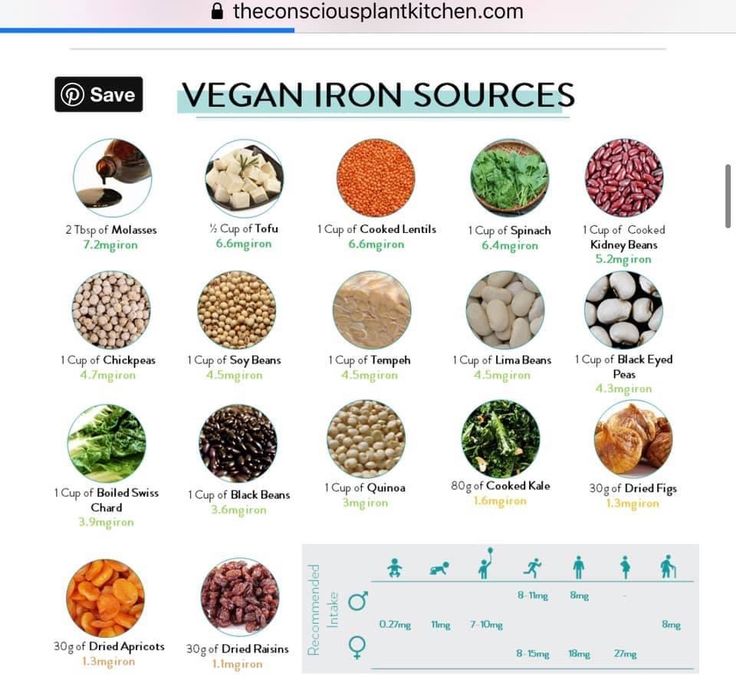 Diagnosis and prevention of iron deficiency and iron-deficiency anemia in infants and young children (0-3 years of age). Pediatrics. 2010;126(5):1040-1050.
Diagnosis and prevention of iron deficiency and iron-deficiency anemia in infants and young children (0-3 years of age). Pediatrics. 2010;126(5):1040-1050. - Otten, J. J., Hellwig, J. P., & Meyers, L. D. (2006). DRI, dietary reference intakes: The essential guide to nutrient requirements. Washington, D.C: National Academies Press.
- U.S. Department of Agriculture, Agricultural Research Service. FoodData Central, 2019. Fdc.nal.usda.gov.
- H C Brittin, C E Nossaman. Iron content of food cooked in iron utensils. J Am Diet Assoc. 1986 Jul;86(7):897-901PubMed
- Adish A.A., Esrey S.A., Gyorkos T.W., Jean-Baptiste J., Rojhani A. Effect of consumption of food cooked in iron pots on iron status and growth of young children: A randomised trial. Lancet (Lond. Engl.) 1999;353:712–716 PubMed
- Sharma S, Khandelwal R, Yadav K, Ramaswamy G, Vohra K. Effect of cooking food in iron-containing cookware on increase in blood hemoglobin level and iron content of the food: A systematic review.
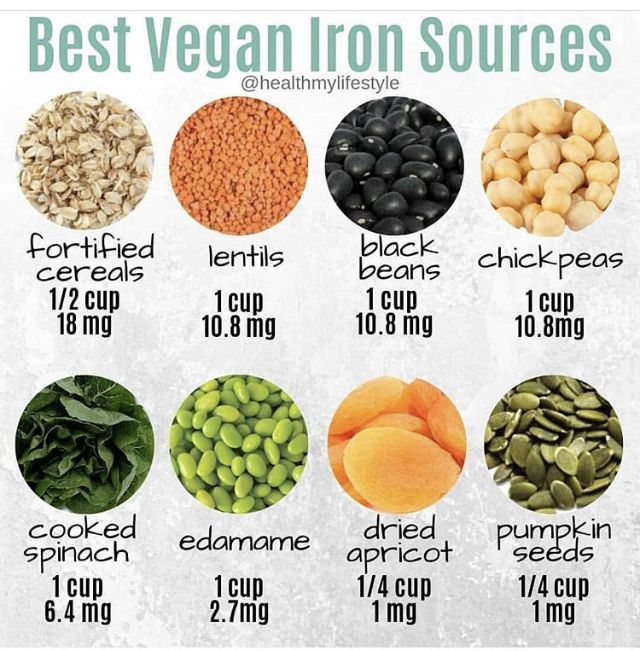 Nepal J Epidemiol. 2021;11(2):994-1005. PubMed
Nepal J Epidemiol. 2021;11(2):994-1005. PubMed
11 IRON-RICH FOODS FOR KIDS! MedUnion will tell you!📝
Everyone knows that young children are picky eaters, but there are many iron-rich foods that even the most capricious kids will appreciate.
Small children refuse food for various reasons - maybe it is too red or too green, too mushy, etc. Parents of course worry about the lack of nutrients that growing bodies of babies need. nine0003
Iron deficiency is a fairly common problem in children and about 8 percent of babies are estimated to be iron deficient.
In this article, you'll learn how much iron babies need, 11 iron-rich foods, and recipes and ways to include these foods in your baby's diet.
WHAT AMOUNT OF IRON DO BABY NEED?
According to the National Institutes of Health, children should receive the following amount of iron in milligrams (mg) daily:
- Infants 7-12 months 11 mg
- Infants 1-3 years 7 mg
- Children 4-8 years 10 mg
babies eat.
There are two types of iron: heme and non-heme. Heme iron is found only in animal products such as meat and seafood. Non-heme iron is found in plant foods and fermented foods. nine0003
Both forms of iron can help a person meet their daily iron requirement. However, heme iron is more easily broken down by the body. For this reason, people who get iron from non-animal sources, including vegans, vegetarians, and picky toddlers, should consume 1.8 times the amount of iron recommended for their age group.
11 FOODS WITH THE MOST IRON
Oatmeal is a rich source of iron for babies
Many children are incredibly picky and will refuse to eat many times before they start eating, so don't be discouraged and continue to offer healthy food.
For a balanced diet, change your iron sources more often and encourage your little ones to try different foods.
Almost all babies love foods that are an excellent source of iron, for example:
- 1.
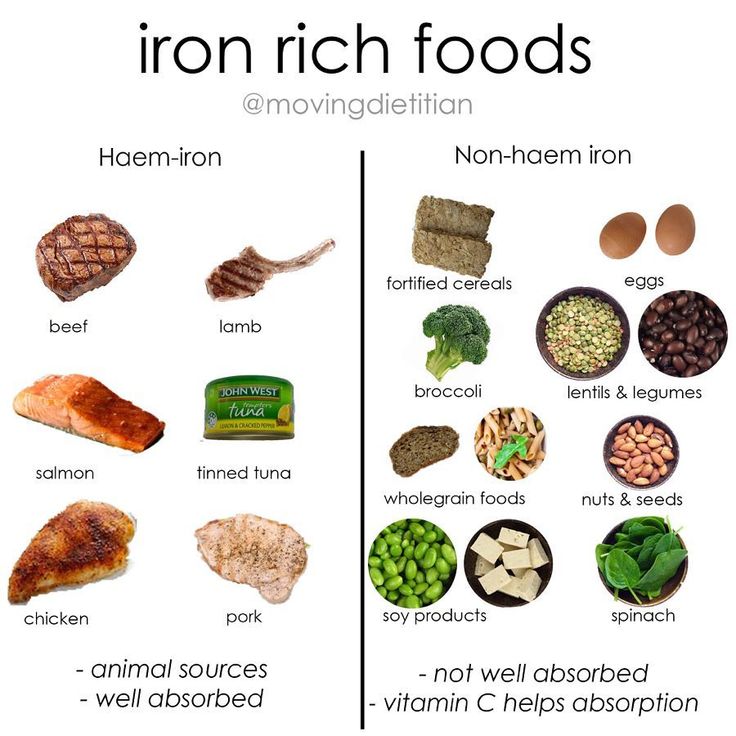 Iron-fortified breakfast cereals
Iron-fortified breakfast cereals
Many breakfast cereals are fortified with iron. They usually contain 100 percent of the daily value of iron for adults. The iron content can be found on the packaging. nine0003
Remember that many breakfast cereals are high in sugar and salt. This type of breakfast can be given occasionally as a treat or in small portions with a balanced diet.
- 2. Oatmeal
Oatmeal is a nutritious snack that many children love. According to one source, 0.75 cups of oatmeal contains about 4.5 - 6.6 mg of iron.
Oatmeal is also rich in fiber, which is good for children with digestive problems, including constipation. nine0003
To make porridge more appetizing, sprinkle it with cinnamon, a little brown sugar and a handful of raisins.
- 3. Meat
All meat products are rich in iron. Although many toddlers often refuse meat, there are several ways that can convince him to give it a try:
- Use fun cutter cutters to cut meat products.
 The iron content can be increased by placing a piece of cold cuts on white bread, which will add another 1 mg of iron. nine0018
The iron content can be increased by placing a piece of cold cuts on white bread, which will add another 1 mg of iron. nine0018 - Try chicken nuggets. Many toddlers who refuse meat enjoy eating chicken nuggets. However, be careful as they are high in salt and saturated fat.
- Try mixing ground beef or duck with a little milk before cooking for a creamier texture that many babies love.
- 4. Peanut Butter Sandwiches
The amount of iron in peanut butter varies by brand, but typically contains about 0.56 mg of iron per teaspoon. To get extra iron, you can make a sandwich with white bread, which will provide another 1 mg of iron. nine0003
Peanut butter is also high in protein, which is a great option for kids who don't eat meat.
Peanut butter and honey or banana sandwiches can be made as an alternative to cookies and other low-nutrient snacks.
- 5. Dark Chocolate
Dark chocolate is a rich source of antioxidants and helps your baby get the right amount of iron. Second after meat, dark chocolate is one of the richest foods in terms of iron content, containing 7 mg of iron per 90 grams of product.
Second after meat, dark chocolate is one of the richest foods in terms of iron content, containing 7 mg of iron per 90 grams of product.
Some children do not like the bitter taste of dark chocolate. You can try melting it and mixing it with peanut butter and then spreading it on bread.
- 6. Eggs
A hard-boiled egg contains 1 mg of iron. Many children love to peel eggs from the shell. Snacking can be made even more fun by coloring the eggs first.
If your little one doesn't like hard-boiled eggs, try making scrambled eggs instead, or use animal molds. nine0003
Some children like fried egg sandwiches. Lightly fry the egg, then place it on a piece of bread and add some ketchup.
- 7. Legumes
Legumes are an excellent source of iron. White beans are considered to be one of the richest sources of iron and contain 8 mg per serving.
To get kids to eat legumes, use the following recipes:
- Cook beans and potatoes, mash them and add some cinnamon
- Beans can be shaped into patties or put on bread
- 8.
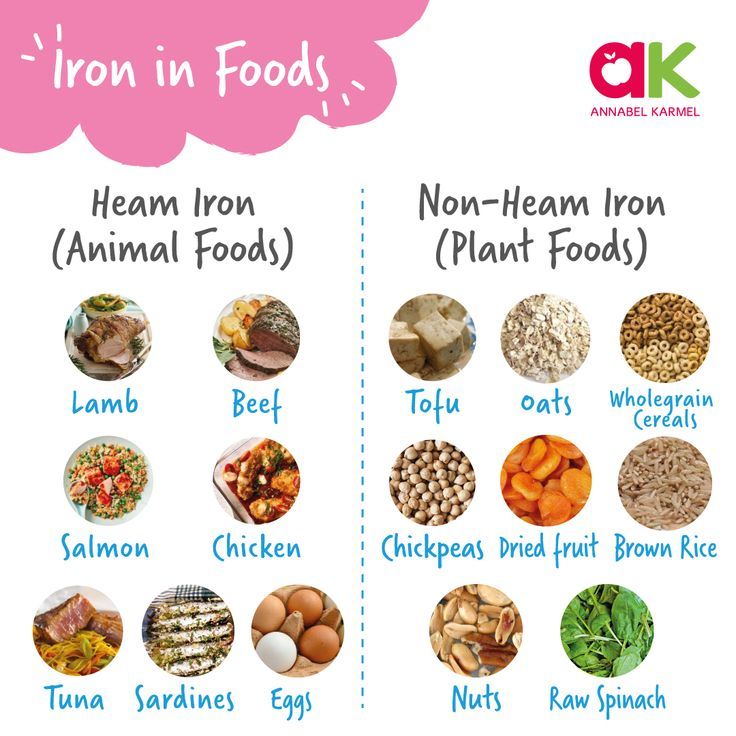 Nuts
Nuts
Nuts, including cashews and pistachios, are an excellent source of iron, protein and other essential nutrients.
However, nuts can pose a risk of choking in children, so do not give whole nuts to children who are just learning to chew.
You can make nut crumbs or spread nut butter on crackers or whole grain bread. nine0003
- 9. Fish
Consider including fish in your baby's diet as it is highly nutritious and a great source of protein, and some species, such as mackerel and salmon, are high in omega-3 saturated fatty acids that are good for brain work.
Canned tuna contains 1 mg of iron per serving. You can make tuna crackers or put it on bread.
Canned tuna is also suitable for children who like to dip one food into another. You can mix tuna with avocado for a creamier texture that's easy to dip into crackers or chips. nine0003
- 10. Vegetables
Children refusing to eat vegetables is a common problem.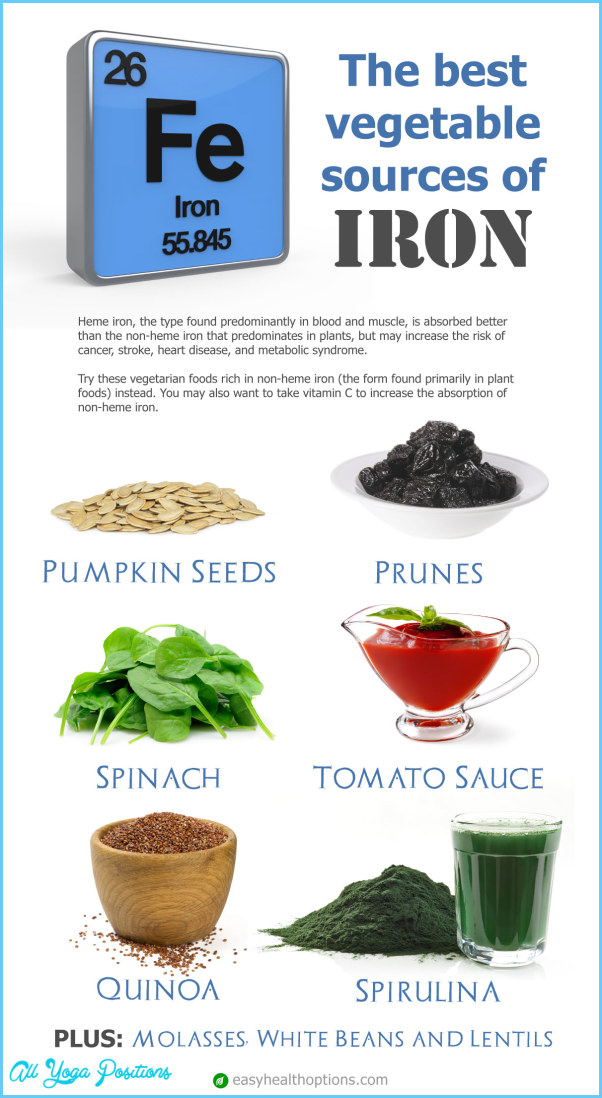 Try making a vegetable smoothie for a nutritious, iron-rich snack that even the pickiest of kids will love.
Try making a vegetable smoothie for a nutritious, iron-rich snack that even the pickiest of kids will love.
You can try the following recipes:
- Boil and puree spinach. Spinach contains 0.81 mg of iron per cup. Next, mix it with watermelon, frozen blueberries, raspberries and a slice of avocado for a hearty and nutritious smoothie. nine0018
- Mix a teaspoon of honey with mashed broccoli, add chard, honey melon and figs for a delicious treat.
- 11. Fruits
Some fruits are excellent sources of iron.
- Raisins, 4 mg
- Dried apricots, 3.46 mg
- Red-skinned cherries, 0.71 mg
- Diced watermelon, 0.936 mg
- 0018
Fruit smoothie tastes even better when mixed with a little yogurt and honey.
Your baby's favorite fruit can be made into popsicles. Freeze fruit puree for 2-3 hours and enjoy healthy iron-rich ice cream.
WHAT ARE THE SIGNS OF IRON DEFICIENCY IN CHILDREN?
Low energy levels in babies can be a sign of iron deficiency
If you're concerned that your baby may be iron deficient, don't wait until symptoms appear.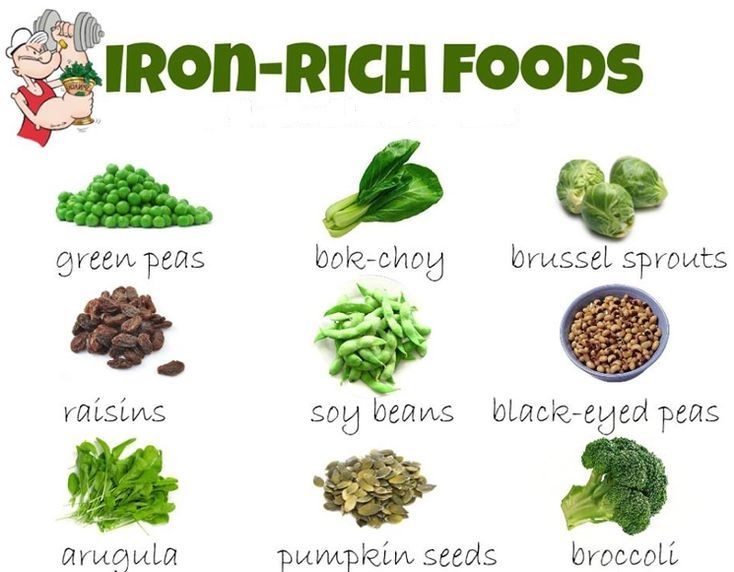 See your doctor to have your baby's blood tested for iron. Continue giving your child iron-rich foods and ask your doctor to prescribe an iron supplement. nine0003
See your doctor to have your baby's blood tested for iron. Continue giving your child iron-rich foods and ask your doctor to prescribe an iron supplement. nine0003
The American Academy of Pediatrics recommends that babies and young children be tested for iron deficiency at 9-12 months of age and again at 15 months of age.
Iron deficiency symptoms include:
- Very pale skin
- Cold hands and feet
- Painful or crimson tongue
- Very low energy
- Rapid heart rate
- all children put objects in their mouths
- Muscle weakness
Children with certain medical conditions have difficulty absorbing iron regardless of diet. Talk to your doctor or dietitian about how you can prevent iron deficiency in children with digestive problems, frequent diarrhea, a heart disorder, a metabolic disorder, or cancer.
CONCLUSION
The Ellin Sutter Institute, which researches and publishes the best ways to feed babies, recommends the following strategies:
- Choose and prepare healthy meals regularly
- Avoid snacking between meals
- Do not use food as a reward or punishment
- Encourage children to eat as much as they want
- Avoid or force words like "one more bite" eat more of what they don't like to get what they like
- Set an example of good nutrition
- Eat together at the same table
Toddlers are just beginning to understand what proper nutrition is, and just like other skills, proper nutrition comes with time.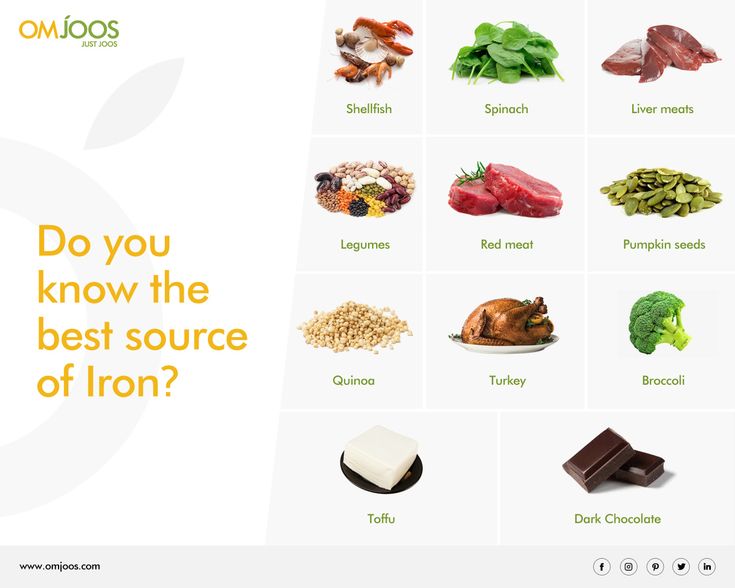
Share on social networks
10 products, rich in iron (list)
Iron, necessary for all living organisms. It helps to synthesize collagen and serotonin, supports the immune system and is involved in metabolic processes [1]. But the main function of iron is cellular respiration. This microelement is part of hemoglobin, the protein that makes up red blood cells. It is iron that helps blood cells to bind oxygen and deliver it to the tissues, and then remove the exhaust carbon dioxide from the body. By the way, it also stains the blood red. nine0003
Our body is unable to produce iron on its own. He gets it from food, so it is important that the diet is varied. There are two types of iron: heme and non-heme. The former is absorbed more efficiently [2]. It can be found in meat, fish and seafood.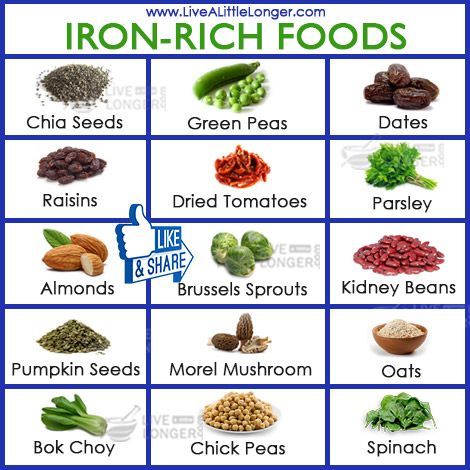 The source of the second is plant food. Here is a list of foods with the highest iron content of both types. Including them in the diet will help replenish the micronutrient reserves.
The source of the second is plant food. Here is a list of foods with the highest iron content of both types. Including them in the diet will help replenish the micronutrient reserves.
© Ella Olsson/Pexels
Advertising on RBC www.adv.rbc.ru nine0003
Daily intake of iron
Women aged 19-50 need iron the most. They need to receive at least 18 mg of the trace element per day. During pregnancy, the need for it increases to 27 mg. Adolescents 14–18 years of age also require an increased iron content: girls - 15 mg, boys - 11 mg. The average daily intake of iron for adult men and older people of both sexes is 8 mg [3]. It increases significantly with intensive sports, regular heavy physical exertion and heavy menstruation. nine0003
Foods high in iron
- Shellfish
- Offal
- Red meat
- Spinach
- Legumes
- Pumpkin seeds
- Quinoa
- Broccoli
- Tofu
- Dark chocolate
Shellfish
Nearly all types of shellfish are rich in iron.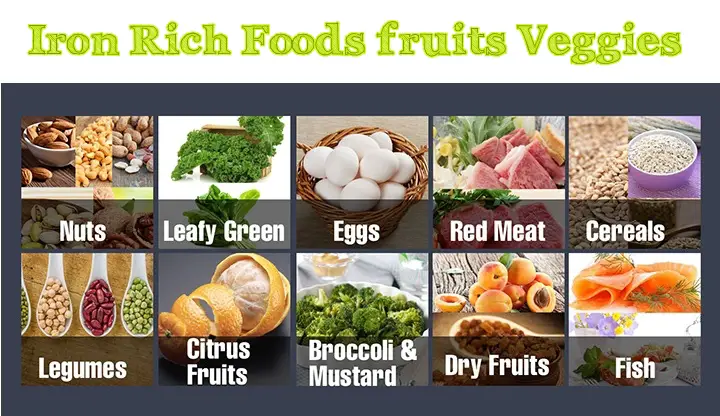 Thus, one hundred-gram serving of oysters contains about 3 mg of iron, which is 17% of the daily requirement [4]. In addition, this amount also provides 24% of the Daily Value of Vitamin C and 4% of the Daily Value of Vitamin B12. Shellfish are also low in calories, high in protein, and increase levels of "good" cholesterol, which prevents heart disease. nine0003
Thus, one hundred-gram serving of oysters contains about 3 mg of iron, which is 17% of the daily requirement [4]. In addition, this amount also provides 24% of the Daily Value of Vitamin C and 4% of the Daily Value of Vitamin B12. Shellfish are also low in calories, high in protein, and increase levels of "good" cholesterol, which prevents heart disease. nine0003
Offal
Liver, kidneys, brain, heart, stomachs and other offal contain large amounts of iron. Although not everyone likes their taste, offal often surpasses meat in terms of nutritional content. For example, to get 36% of the daily value of iron and meet the daily requirement for vitamin A, it is enough to eat only 100 g of beef liver [5]. In addition, offal is a good source of protein, copper, selenium and choline, which is important for the liver.
Red meat
It is the main source of easily digestible heme iron. At the same time, the darker the meat, the more this trace element in it. One 100 gram steamed ground beef patty contains 2. 7 mg of iron. This fills the daily requirement by 15% [6]. Meat also serves as a source of protein, zinc, selenium, and B vitamins. But poultry is not so rich in iron: in 100 g of turkey, its content does not exceed 0.7 mg [7].
7 mg of iron. This fills the daily requirement by 15% [6]. Meat also serves as a source of protein, zinc, selenium, and B vitamins. But poultry is not so rich in iron: in 100 g of turkey, its content does not exceed 0.7 mg [7].
© Andrijana Bozic /Unsplash
Spinach
Such a rich set of nutrients, as in spinach, is rare. It contains folate, lutein, beta-carotene, calcium, vitamins A and E. In addition, 100 g of the product replenishes 15% of the daily iron requirement. It is non-heme, but at the same time it is quite well absorbed due to the high concentration of vitamin C in spinach. Doctors advise to boil the leaves a little - this will help reduce the amount of oxalic acid, which prevents the absorption of iron [8].
But keep in mind: 100 g of fresh spinach is a big package. It is designed for several people, and it is hardly possible to eat it at a time. In addition, spinach tends to accumulate nitrates, which are often used in its cultivation. Buy the product in trusted farm shops or in special organic packages. Or try growing it yourself - on the windowsill. In winter, instead of fresh spinach, you can take frozen: all its beneficial properties and taste are preserved. nine0003
Or try growing it yourself - on the windowsill. In winter, instead of fresh spinach, you can take frozen: all its beneficial properties and taste are preserved. nine0003
Legumes
This is a must have for vegetarians and vegans. Legumes are one of the best plant sources of iron. Chickpeas, peas, lentils, beans, soybeans - choose what you like. One cup of boiled lentils contains 6.6 mg of iron. This is 37% of the daily norm [9]. And half a cup of boiled beans is enough to fill 10% of the daily requirement for an element [10]. In addition, legumes give a feeling of satiety for a long time and allow you to reduce calorie intake [11].
Pumpkin seeds
Pumpkin seeds can be a snack option. 100 g of the product contains 9 mg of iron, or half of the daily recommended amount [12]. But you can't get carried away with them. First, it can cause problems with the gastrointestinal tract. Secondly, pumpkin seeds are very nutritious. A 100-gram serving provides the body with 559 kcal.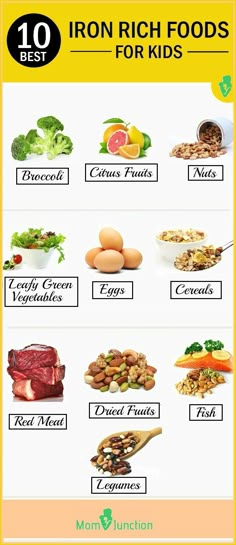 To increase your iron levels without harming your health, add a small handful of seeds to your salad, porridge, or soup.
To increase your iron levels without harming your health, add a small handful of seeds to your salad, porridge, or soup.
Quinoa
South American groats are often used as a substitute for cereals containing gluten. Add 100 g of boiled seeds to your favorite salad to replenish 8% of the daily iron requirement [13]. Unlike traditional cereals, quinoa is rich in protein containing essential amino acids [14]. Interestingly, our body perceives quinoa as a protein from cow's milk. nine0003
© Engin Akyurt /Pexels
Broccoli
A diet rich in broccoli helps improve eyesight, reduces inflammation and slows down aging. Broccoli cleanses the body, removes cholesterol and excess sugar. Use it as a side dish — a glass of cooked broccoli provides 6% of your daily iron requirement [15]. To get the most benefit, steam broccoli for no longer than 5 minutes. This will help preserve vitamin C.
Tofu
Making tofu is like making cheese from milk, which is why many people call it soy cheese. In terms of its nutritional properties, it is almost as good as dairy products - for this, vegans and people with lactose intolerance fell in love with it. 100 g of tofu contains 17 g of protein, which is easily and quickly absorbed by the body. In addition, the same amount of the product helps to cover 15% of the daily requirement of iron [16]. nine0003
In terms of its nutritional properties, it is almost as good as dairy products - for this, vegans and people with lactose intolerance fell in love with it. 100 g of tofu contains 17 g of protein, which is easily and quickly absorbed by the body. In addition, the same amount of the product helps to cover 15% of the daily requirement of iron [16]. nine0003
Dark chocolate
Chocolate not only brings pleasure and stimulates the production of the "hormone of happiness", but also helps to normalize iron levels. Choose chocolate that contains at least 70% cocoa [17]. Nutritionists advise eating no more than a quarter of a chocolate bar a day. This will be enough to compensate for 17% of the daily iron requirement, improve the intestinal microflora and improve mood.
© Dovile Ramoskaite/Unsplash
Why iron deficiency is dangerous
Iron deficiency usually has no symptoms at first. But if you do not replenish its reserves on time, you can provoke the development of iron deficiency anemia [18]. Its main symptoms are: weakness, fatigue, shortness of breath, pallor, drowsiness, loss of appetite, heart palpitations and headaches [19]. There may be a desire to eat something inedible - chalk, clay, paper or ice. With a lack of iron, the cells begin to "suffocate", which is why many vital metabolic processes are disrupted in the body. nine0003
Its main symptoms are: weakness, fatigue, shortness of breath, pallor, drowsiness, loss of appetite, heart palpitations and headaches [19]. There may be a desire to eat something inedible - chalk, clay, paper or ice. With a lack of iron, the cells begin to "suffocate", which is why many vital metabolic processes are disrupted in the body. nine0003
Iron deficiency also contributes to reduced immunity and a high risk of infections [20]. In addition, it is one of the causes of hair loss. The trace element is responsible for delivering oxygen to the follicles, thereby strengthening and nourishing the roots. With its deficiency, the hair becomes dry and weak and may begin to fall out [21]. Among other external signs: sores in the corners of the mouth, dry skin, brittle exfoliating nails. According to a study by Japanese scientists, in some cases, iron deficiency causes depression [22]. nine0003
© Engin Akyurt/Pexels
If you notice signs of iron deficiency, seek medical attention. He or she will order blood tests, identify the source of the problem, and be able to create a treatment plan tailored to your individual needs.
He or she will order blood tests, identify the source of the problem, and be able to create a treatment plan tailored to your individual needs.
Expert's comment
Evgeniya Maevskaya, MD, gastroenterologist and nutritionist GMS Clinic
How often do you need to take a blood test to find out about iron deficiency in time?
The frequency depends on many factors: general health, clinical signs of overt or latent deficiency, being at risk for iron deficiency, or the presence of chronic diseases, including the gastrointestinal tract. nine0003
For a potentially healthy person, it is enough to monitor blood counts every six months. However, a general analysis is not enough. At a minimum, it should be supplemented by a study on serum iron and ferritin, otherwise signs of a latent deficiency can be missed. In some cases, a more rare test is needed - for soluble transferrin receptors. This is determined only by the doctor.
Is it possible to make up for iron deficiency only through plant foods? What is your advice for vegetarians and vegans? nine0003
Treatment of anemia with dietary iron alone is not possible due to its low content and low bioavailability. Anemia is treated only with iron supplements.
Anemia is treated only with iron supplements.
Vegetarians and vegans should eat as varied a diet as possible, including vegetable sources of iron such as sea kale. Shrimps, mussels, and sea fish can serve as a good source of iron if allowed. It is better for vegetarians to undergo an examination and make sure that there is no atrophy in the stomach and problems in the intestines. With atrophy and insufficient acidity of the stomach, the transition of non-heme iron from plant foods to the digestible heme form is significantly difficult, which means that it will not be absorbed. nine0003
What to do if a person notices symptoms of iron deficiency?
At the first symptoms of iron deficiency, you should consult a doctor. It is important not only to correct the deficiency, but, most importantly, to identify its cause. It is impossible to do this on your own.
Why is excess iron in the body dangerous?
The so-called iron overload is certainly dangerous. It can lead to damage to internal organs, fibrosis in organs and tissues.